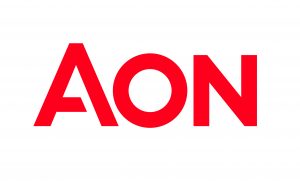What to do when IP rights are unclear

On the face of it, intangible assets are relatively easy to understand: a firm’s intellectual property has value that can help fund the company.
In an ideal world, firms would ensure their intangible assets are suitably protected, specialists such as Aon would be able to assign a value, and lenders or buyers would base financing or sale value on that.
Things are not always so simple. What do you do when IP rights are messier?
Keith Bradley, founder of industrial roofing supplier Bradclad, faced this issue with the firm’s latest product SolarBond, a lightweight solar panel that can adhere to metal roofs. This enables retrofitting of buildings unable to take the weight of the heavier traditional solar panels, and lowers the structural costs of new buildings.
Bradley has worked with two outside companies to enable SolarBond: an international manufacturer who can make the panels at a competitive price, and a UK laboratory to develop an adhesive that will bond the panel to metal roofs.
The value of such a product is immediately obvious. While Keith has trademarked SolarBond, and although the idea of combining the lightweight panels with a new adhesive is his, he cannot patent the adhesive as it was developed for him by a third party.
His situation immediately engaged the interest of experts at TheBusinessDesk.com’s latest round table discussion on intangible assets, held at Aon’s Leeds office in December.
Frank Suttie, director at lawyers Freeths, and a specialist in intellectual property, suggested Bradclad might look to establish a contract with the adhesive lab, though that might not be easy.
“Contract law is infinitely flexible, with one caveat. Obviously what you have in mind already is how much exclusivity you can get with that particular manufacturer? Will that manufacturer give you exclusivity? The caveat is that competition law comes into play as well, if you try to control the market. But for speciality purposes there is the vertical distribution agreement.
“You have to explore the relationship with the glue manufacturer. Looking at it from their point of view, they will say are they unduly restricting themselves? They will be switched on to the fact that there is an application for their product which is very important.”
Another alternative, Suttie suggested, would be to create a joint venture with the lab.
“That absolutely could be worth looking at,” Bradley said. “That is a possibility they might consider – as the glue people themselves said to me they know nothing about roofing, or solar. Effectively, I’ve taken a challenge to them: can you stick A to B. I had sort of given the game away, but I had no choice because we don’t make glue.”
How would one value SolarBond?
“Like any lending process, obviously, there’s a huge element of diligence that goes into placing valuations against certain intellectual property,” said Steve Wilson, of risk and professional services firm Aon. “Probably more so than bricks and mortar diligence, because it’s something intangible by nature.”
When performing valuations Aon’s specialist team use data algorithms to help assess commercial implications.
“Ultimately, what we need to be able to do at the end of the process is to have a robust proposition that any lender would look at and say, well, yes, this business is turning over £100,000 now, but we see from the quantifiable IP that it is going to be worth more in a few year,” Wilson added.
Jamie Watson, managing director of IT support firm Fusion IT, said his company was in a similar situation with IP rights, in that they were building code within an established platform.
“A lot of it boils down to your actual lines of code that you could effectively chuck in a repository somewhere, which we have – that’s our code, which we’ve built.
“The interesting part is when you’re taking something that’s been built jointly with a client. How do you approach that. How do you take it to market? You have to be honest with the clients and say, ‘We have a good thing here, let’s do a joint venture.’”
A second solution Watson was considering was to break away from Fusion’s existing environment by building a new platform. “While we’re building IP within a product, there’s nothing to say we can’t strip it back, build the product from scratch ourselves – get some private equity to finance that for three or four years until we actually have minimum viable products we can take to market, and hopefully on the next tranche of people doing upgrades. That’s where we are at the moment.”
Paul Hallett, co-founder of VetAI, which aims to disrupt pet healthcare through technology, highlighted a third issue. While VetAI owns its own IP it is currently protected as trade secrets rather than as patents.
“We’re building this quite groundbreaking stuff, and it’s all in the algorithms, which are very detailed and complicated. We do keep that under the radar, so the crown jewels have always been protected even in raising the cash.
“But how do we actually protect it? IF you go down the AI patentability route, ultimately, to patent something you have to reveal it. And there’s the risk. You’ve to work out if you want to do that.”
Andy Francy, partner at Freeths, suggested he look at robust employment contracts with confidentiality clauses and NDAs.
Mark Burns, of IT firm and management consultancy Excelledia, faced a different issue. Excelledia is an establish company in the Middle East and Africa, where its compliance software is used by the Qatar Central Bank, among others, but is new to the UK.
“I understand, as a lawyer, how to protect the IP,” he said, “But I don’t understand, as a lawyer, you actually make money from it.”
Ian Marshall, of accountancy firm Sagars, advised, “The challenge is to speak to your accountant and understand what value is sitting in the business and whether that can end up on the balance sheet. You’ve got a challenge as a professional – say, I think there’s value in here, engage with an intellectual property specialist valuer and he’ll go in and do due diligence.
“Then go to you accountant and to say, heres the evidence, what can we do in terms of getting it onto financial statements. They’ll tell you whether you can do it or not, but it’s well worth exploring.”
This was the third of four round tables in the Intangibles series, which is sponsored by Aon, Freeths, Sagars and Boost.









